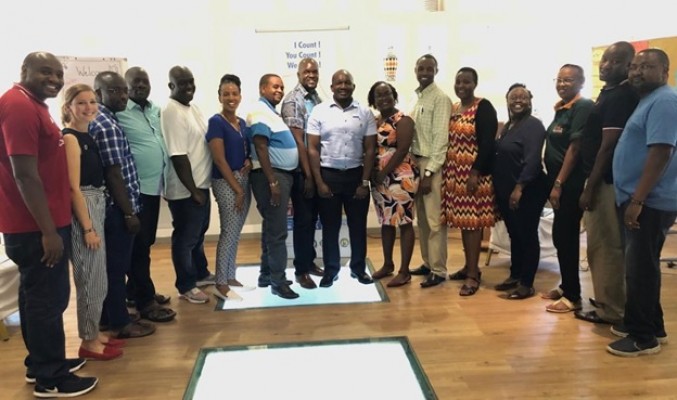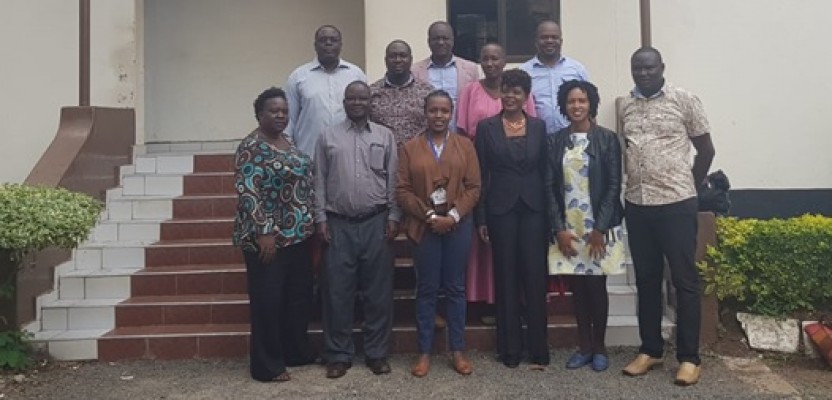Kenya Census Could Help Advance Gender Equality

To strengthen data collection, analysis, utilization, and dissemination, it is crucial to evaluate issues that impact girls and women from an inter-sectional perspective. Here's how Kenya is making strides towards better gender data.
It is often said that what is not counted does not count, and we need statistics to better understand the status of gender equality, health and well-being in Kenya and to improve policy-making. Gender-dis-aggregated data, in turn, facilitates comparison of progress on key social indicators between men and women, boys and girls. Gender data is a powerful tool in our efforts to advance gender equality and empower girls and women due to the role gender statistics play in improving our understanding of the impact of gender on individuals and society.
The role of data featured as a salient meeting point for both the Executive and the Legislative arms of the county government to rally action
Gender statistics illustrate the different experiences of girls and women specifically—providing evidence for girls and women to raise their voices and participate in decisions and policy making along with setting priorities. Gender data fuels women’s rights movements in a powerful way, providing the levers needed to challenge patriarchal structures.
Data, a chronic challenge in Kenya and elsewhere

In Kenya, the production of gender data sheets began in 2005; slowly, other government institutions have also produced data sheets that incorporate gender issues. Although the Kenya National Bureau of Statistics (KNBS), in collaboration with various government agencies, produced subsequent data sheets in 2008, 2011 and 2015, their main weakness has been the lack of key definitions and guidance on interpretation of the displayed data from a gender perspective. This makes data less useful for policy makers not accustomed to gender-based analysis.
Whereas the KNBS has built up its staff capacity, this has not increased or improved the gathering, collating and disseminating of gender-related data – especially at the county level – despite gender functions being shared between national and county governments. Specifically, at national and sub-national levels, we lack analytical graphics that bring key data insights into focus, such as:
- Statistics that reflect the realities of females and males of all ages, with a view to informing gender equality initiatives and policies;
- Data that can highlight meta-narratives, thereby driving change of laws, policies, and budget decisions – particularly when it is about the lived realities of men and boys; girls and women
- Limited capacity on how to analyze such data to inform policies;
- Data is not aligned to the named dimensions (health, education, socio-economic themes) but is rather collected based on ‘availability’.
It is important for the production of data sheets to be made regularly and go beyond showing trends in data to providing new insights from old data and informing future data needs.
Momentum towards better gender data in Kenya
One of the first gender-dis-aggregated data reports at the county level is the Kenya Family Planning and Reproductive Health Data Sheet 2016 by Kenya’s National Council for Population and Development (NCPD) and Population Reference Bureau (PRB). The data sheet highlights data on indicators related to sexual and reproductive health, including pregnancy and fertility, family planning, and sexual violence, sexual knowledge and practices, and maternal health.
In 2017 KNBS published a booklet ‘Women and Men in Kenya’ that provided facts and figures on the status of women and men including on population, health, education, employment, governance, domestic violence, decision-making and persons with disabilities.
The SDG Kenya Forum is a member of the Inter-agency Committee on Gender Statistics under the flagship program Making Every Woman and Girl Count hosted by KNBS & UN Women. Through this committee, the census tools benefited from input from women’s rights organizations and gender experts. This included input into the census questionnaire, engagement in the training of the enumerators and UN Women shall be monitored the process of enumeration. This did bear fruit, for example during the 2019 population census, Kenya was the first African country to include intersex, along with ‘male’ and ‘female’ in the section of gender in the 2019 census. This is in line with Article 27 of the 2010 Constitution, which protects all persons against discrimination regardless of their sex, race, and on other grounds.
Beyond influencing the census tool, there are several initiatives on strengthening the collection, analysis, utilization and dissemination of gender statistics. Recently KNBS, UN Women, and the Council of Governors launched county gender data sheets for 10 counties. The county gender data sheets focus on household, demographic and vital statistics, health, education, economic empowerment, leadership and governance, and a gender equality index for the counties.
In wrapping up...
Gender statistics are key to making sure that women and girls are counted and that their issues and priorities count. But gender statistics must go beyond gender-dis-aggregation. The SDG Kenya Forum is committed to understanding to what extent sectoral data (cutting across economic, education, health, public life and decision making, human rights, and other social dimensions) is dis-aggregated by gender to analyze issues that affect women and girls from an inter-sectional perspective. Going beyond siloed approaches to analyzing structural ways in which women and girls continue to be excluded from the mainstream social, political, and economic spheres in their communities and countries.
It is in doing this that we can develop the ability to better understand how and why women and men differ in their life course trajectories, and what consequences these have for their health and other aspects of their lives so that issues can be systematically addressed, in Kenya and beyond.
By Mark Irura, Monitoring and Evaluation Lead, and Catherine Nyambura, Gender & Advocacy Lead, SDG Kenya Forum .
